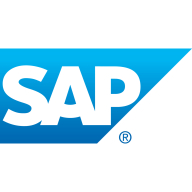

Progress OpenEdge RDBMS and SAP HANA compete in the database management systems category. Data comparisons suggest SAP HANA has the upper hand because of its advanced features.
Features: Progress OpenEdge RDBMS is known for scalability, reliability, and integration capabilities. SAP HANA offers superior speed through in-memory computing, advanced data analytics, and real-time processing capabilities.
Ease of Deployment and Customer Service: Progress OpenEdge RDBMS provides straightforward deployment with excellent customer service. SAP HANA has a more complex deployment backed by robust customer service ensuring efficient implementation and troubleshooting.
Pricing and ROI: Progress OpenEdge RDBMS is economical with a focus on maximizing ROI. SAP HANA requires a higher initial investment but delivers substantial ROI through advanced data processing and business intelligence capabilities.
| Product | Market Share (%) |
|---|---|
| SAP HANA | 8.8% |
| Progress OpenEdge RDBMS | 3.5% |
| Other | 87.7% |

| Company Size | Count |
|---|---|
| Small Business | 26 |
| Midsize Enterprise | 11 |
| Large Enterprise | 61 |
The Progress OpenEdge Relational Database Management System (RDBMS) is an established, database management system for production systems. The OpenEdge database can support thousands of users and high traffic loads with sub-second response times. It helps to ensure that users are productive, customers are satisfied, and, for SaaS/Cloud computing environments, service-level agreements are met. Some of the key benefits of OpenEdge RDBMS include cost-effectiveness, raises productivity, easy to administer, scalable, and easy to manage. Progress OpenEdge RDBMS has a large shared-memory buffer pool allows up to a terabyte of the database to be cached in memory in a 64-bit OS environment. This gives memory-speed access to the frequently used parts of the database for best performance. In addition, its storage or space management is extendable: architected for expansion and optimized for performance. As a result, OpenEdge RDBMS presents virtually no limitations to the amount of data that can be stored in a single database other than the storage limits of your own computing environment.
SAP HANA, also known as SAP High-performance Analytics Appliance, is a multi-model database that stores data in its memory, allowing users to avoid disk storage. The product combines its robust database with services for creating applications. SAP HANA is faster than other database management systems (DBMS) because it stores data in column-based tables in main memory and brings online analytical processing (OLAP) and online transaction processing (OLTP) together.
The column-oriented in-memory database design allows users to run high-speed transactions alongside advanced analytics, all in a single system. This provides companies with the ability to process very large amounts of data with low latency and query data in an instant. By combining multiple data management capabilities, the solution simplifies IT, helps businesses with innovations, and facilitates digital transformation.
The solution is structured into five groups of capabilities, categorized as:
There are three more SAP products that work alongside SAP HANA and complete the experience for users together. SAP S/4HANA Cloud is a ready-to-run cloud enterprise resource planning (ERP). SAP BW/4HANA is a packaged data warehouse, based on SAP HANA, which allows users to consolidate data across the enterprise to get a consistent view of their data. Finally, SAP Cloud is a single database as a service (DBaaS) foundation for modern applications and analytics across all enterprise data. All three products can combine with SAP HANA to deliver to users an optimized experience regarding their data.
SAP HANA Features
Each architectural group of capabilities of SAP HANA has various features that users can benefit from. These include:
SAP HANA Benefits
SAP HANA provides many benefits for its users. These include:
Reviews from Real Users
According to a database consultant at a pharma/biotech company, SAP HANA is a very robust solution with good data access.
Bruno V., owner at LAVORO AUTOM INF E COM LTDA, likes SAP HANA because the product offers advanced features, helps reduce hours, and makes it easy to find what you need.
We monitor all Embedded Database reviews to prevent fraudulent reviews and keep review quality high. We do not post reviews by company employees or direct competitors. We validate each review for authenticity via cross-reference with LinkedIn, and personal follow-up with the reviewer when necessary.